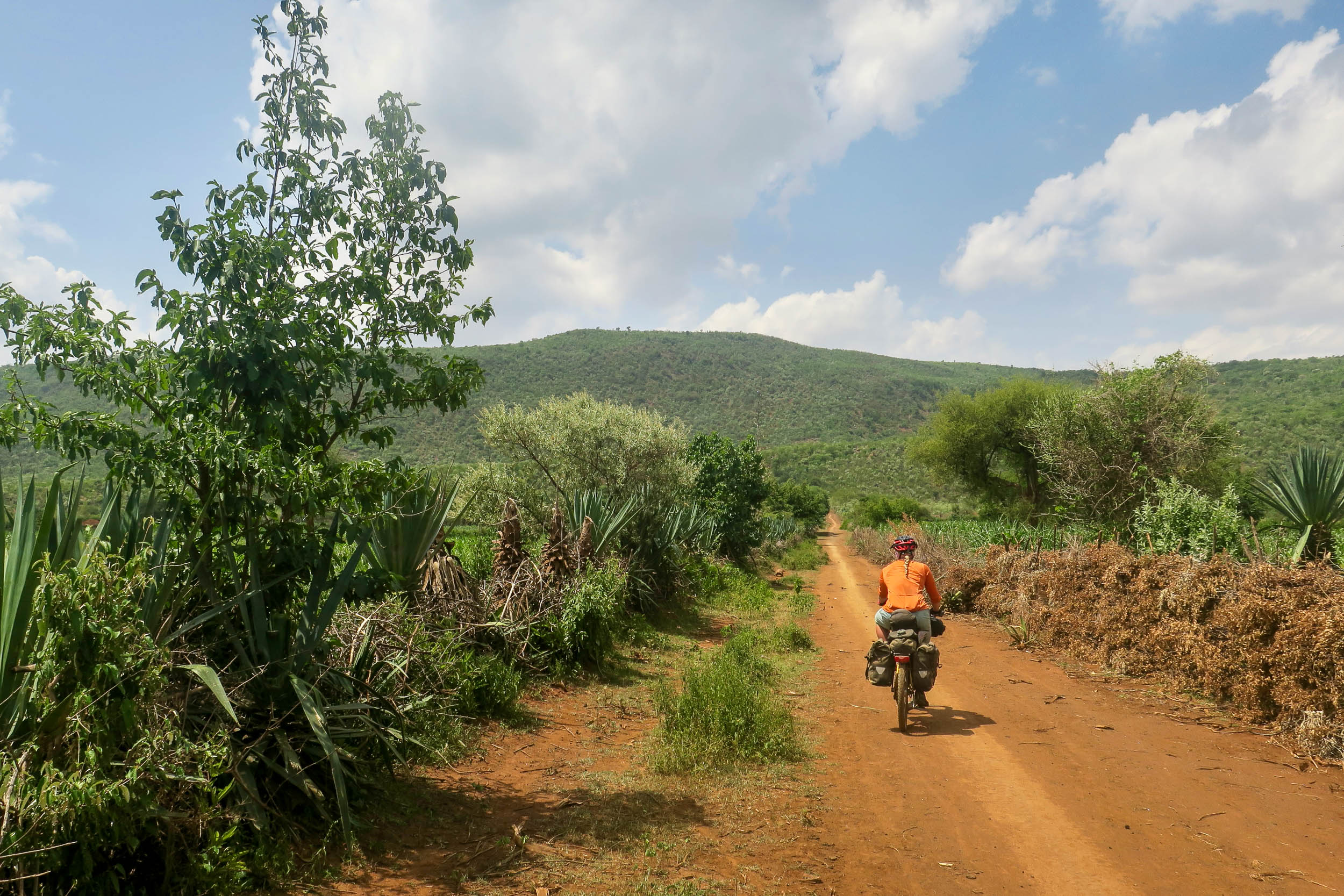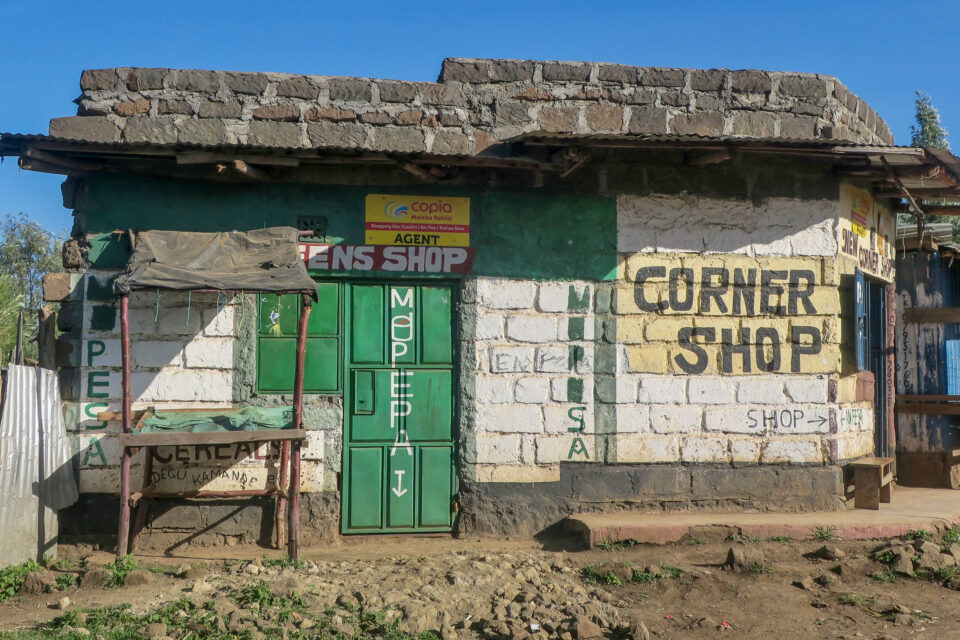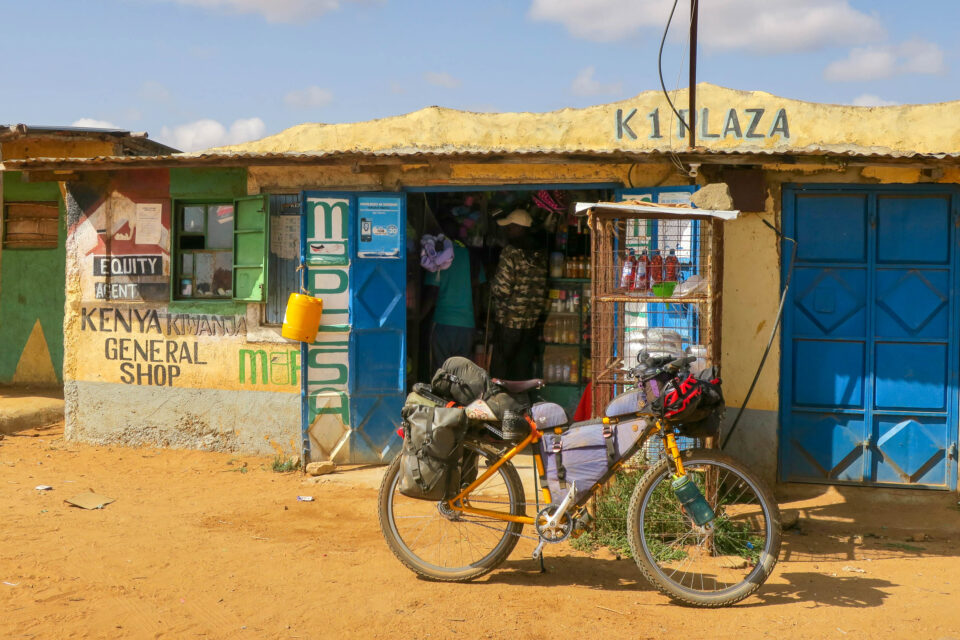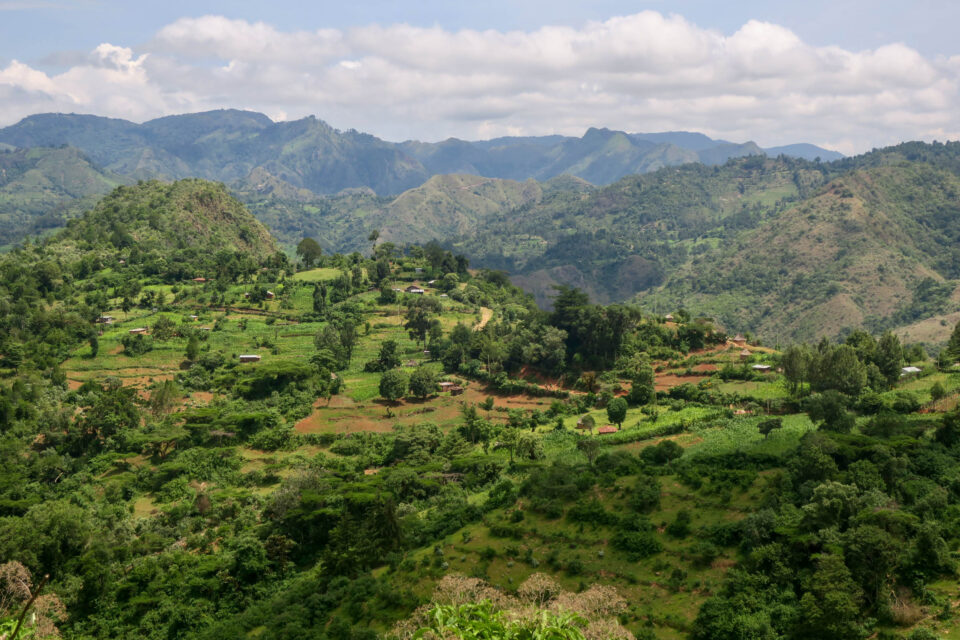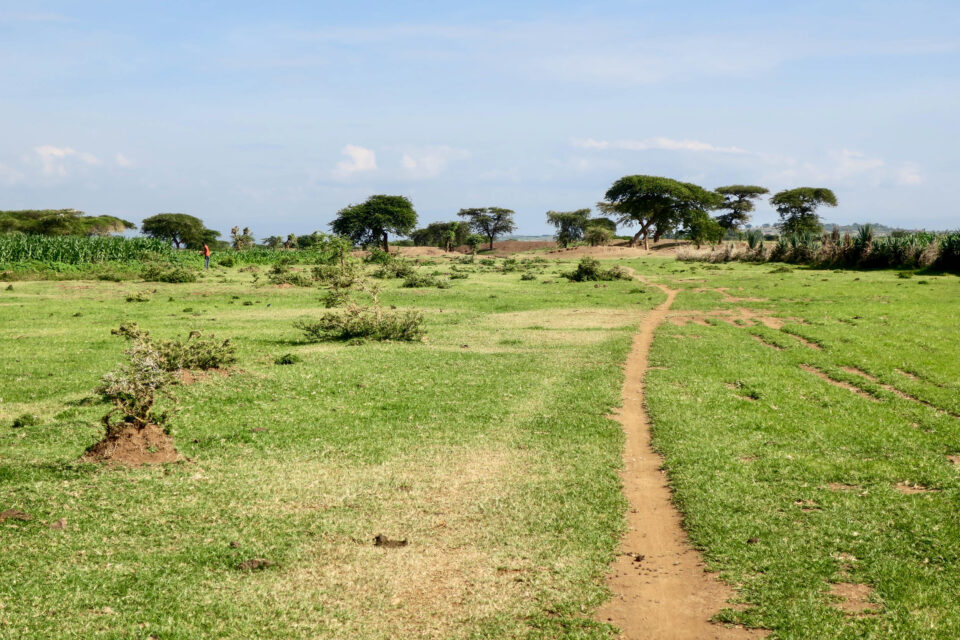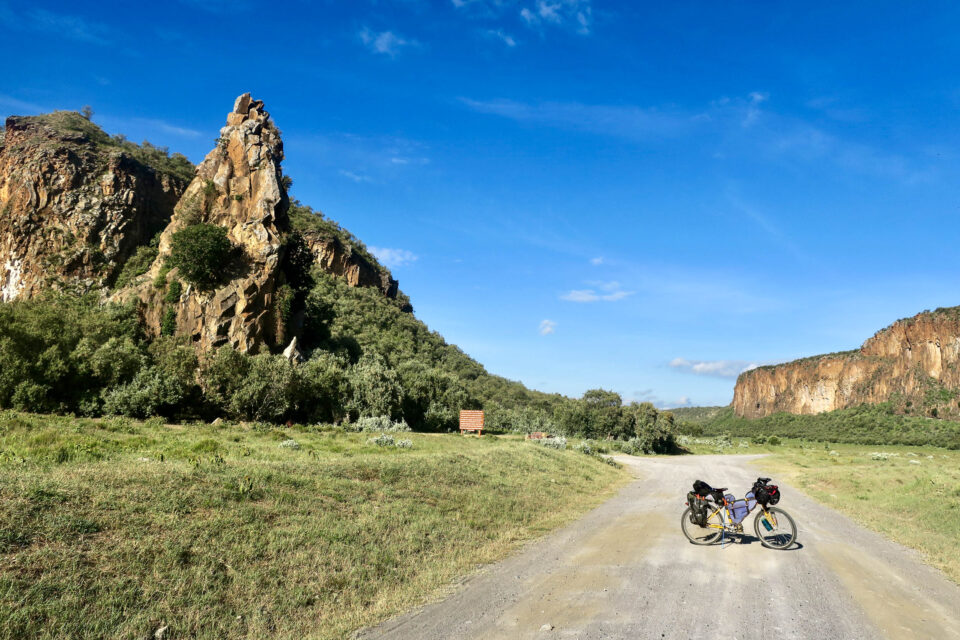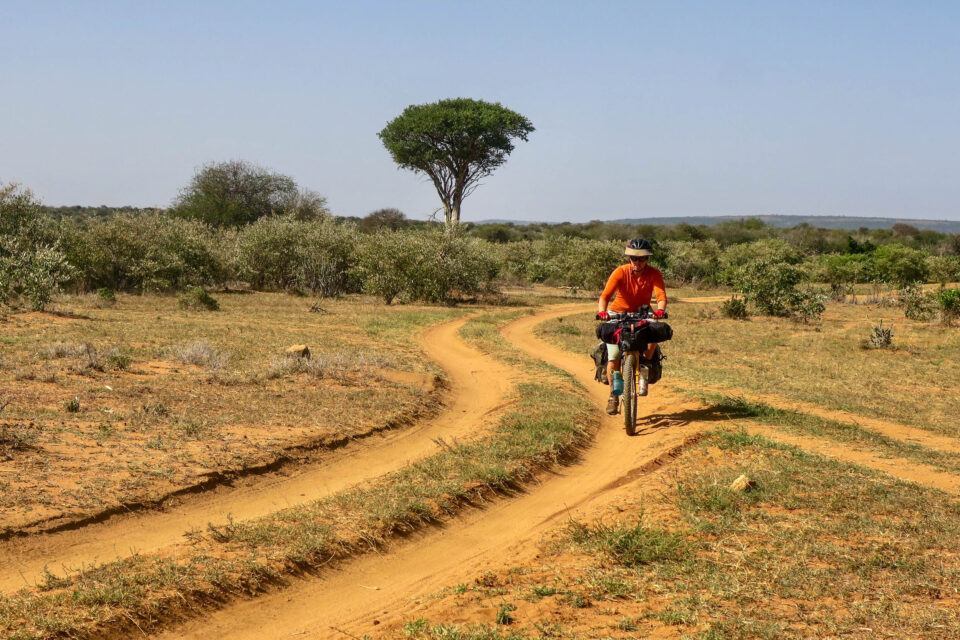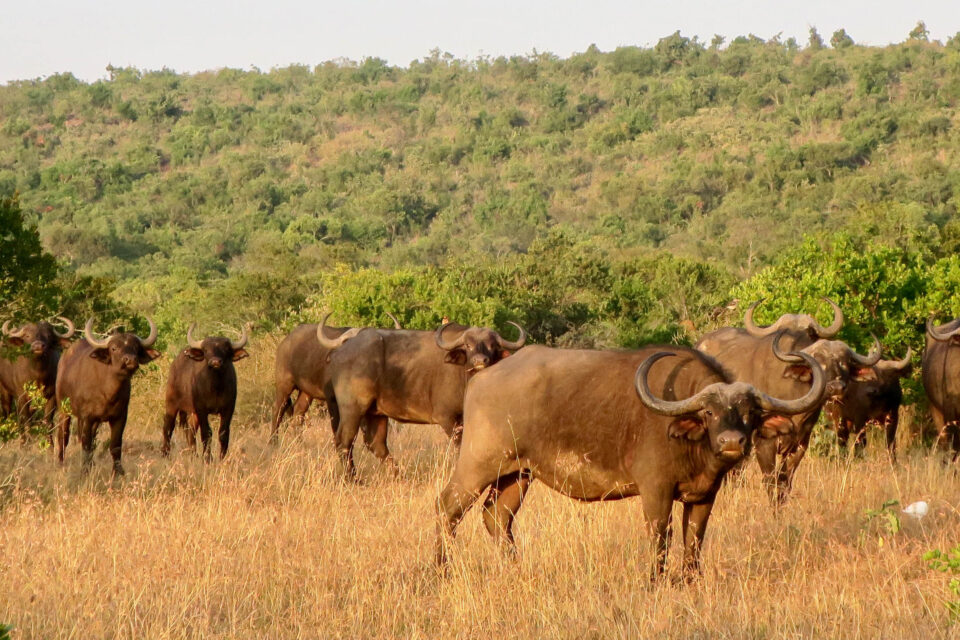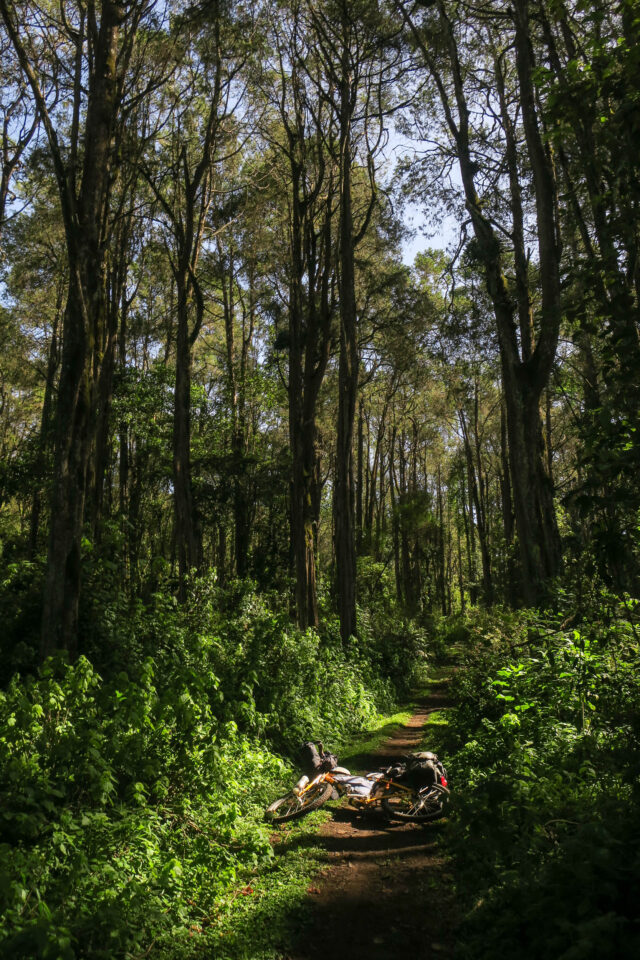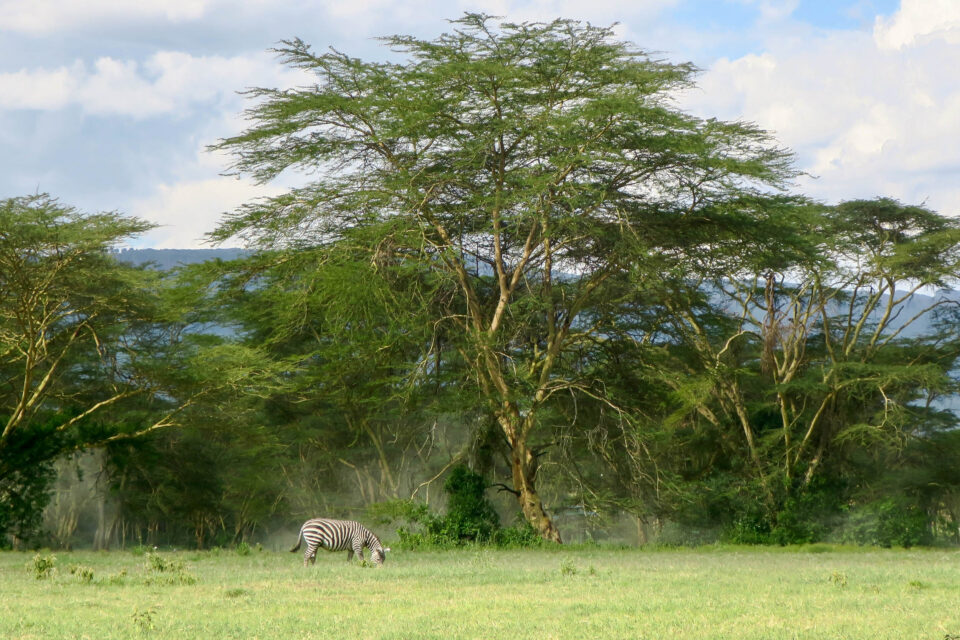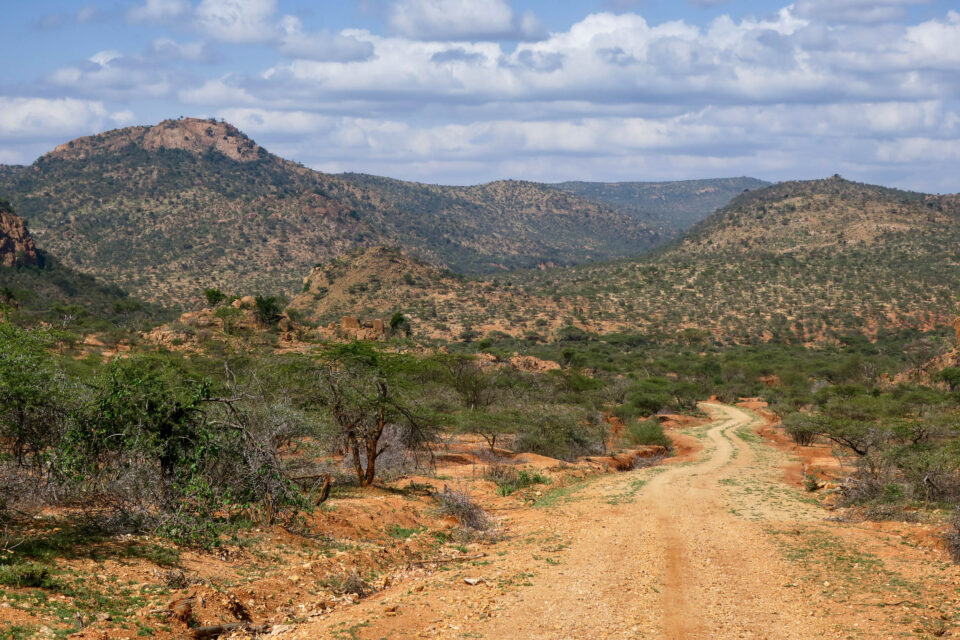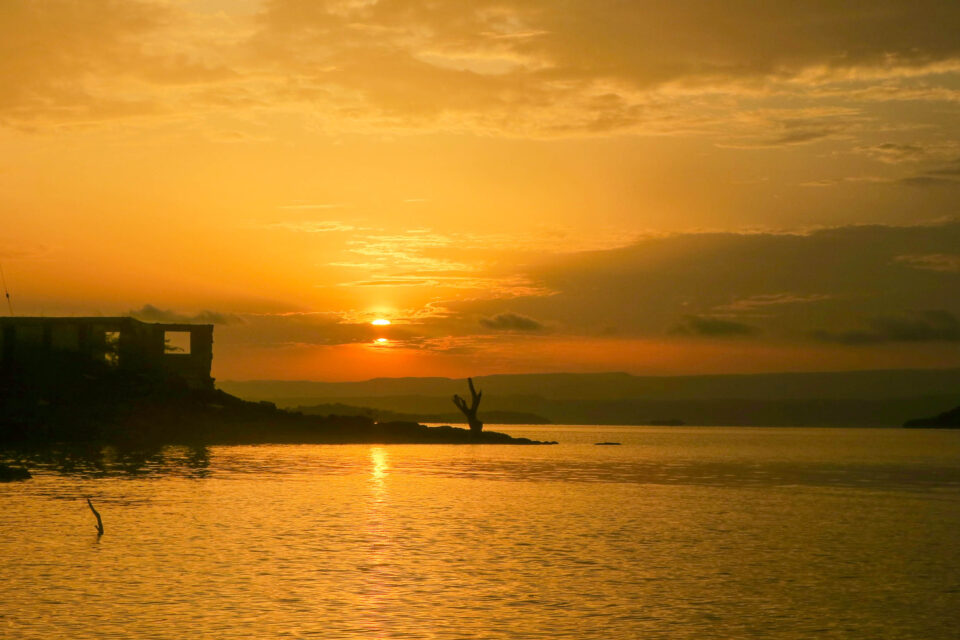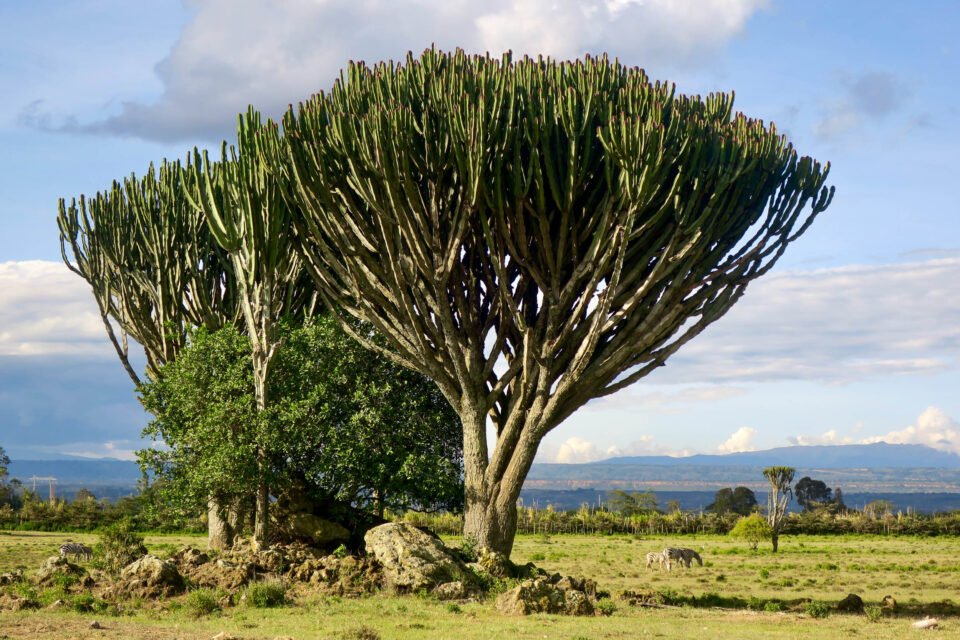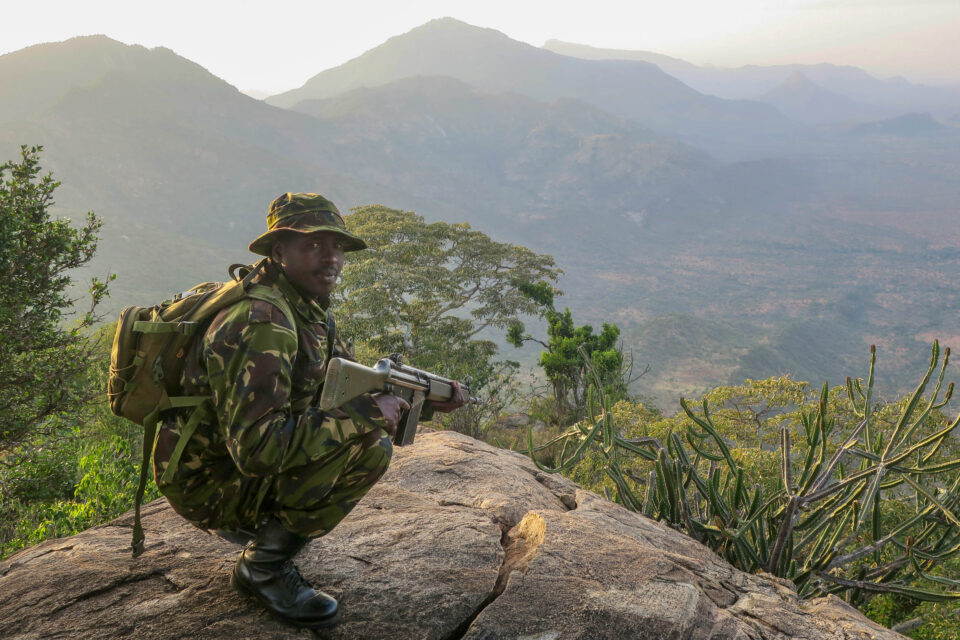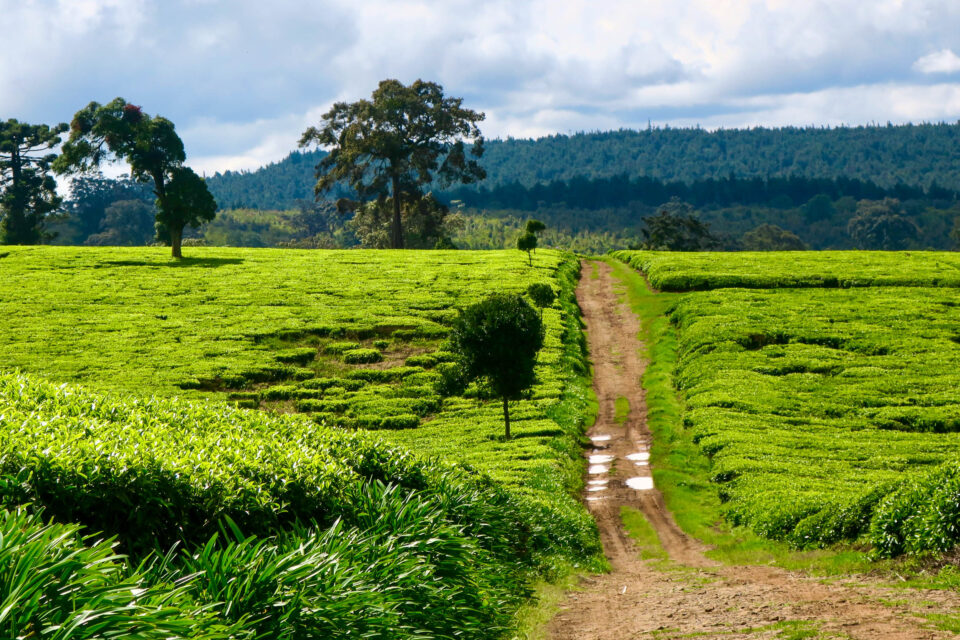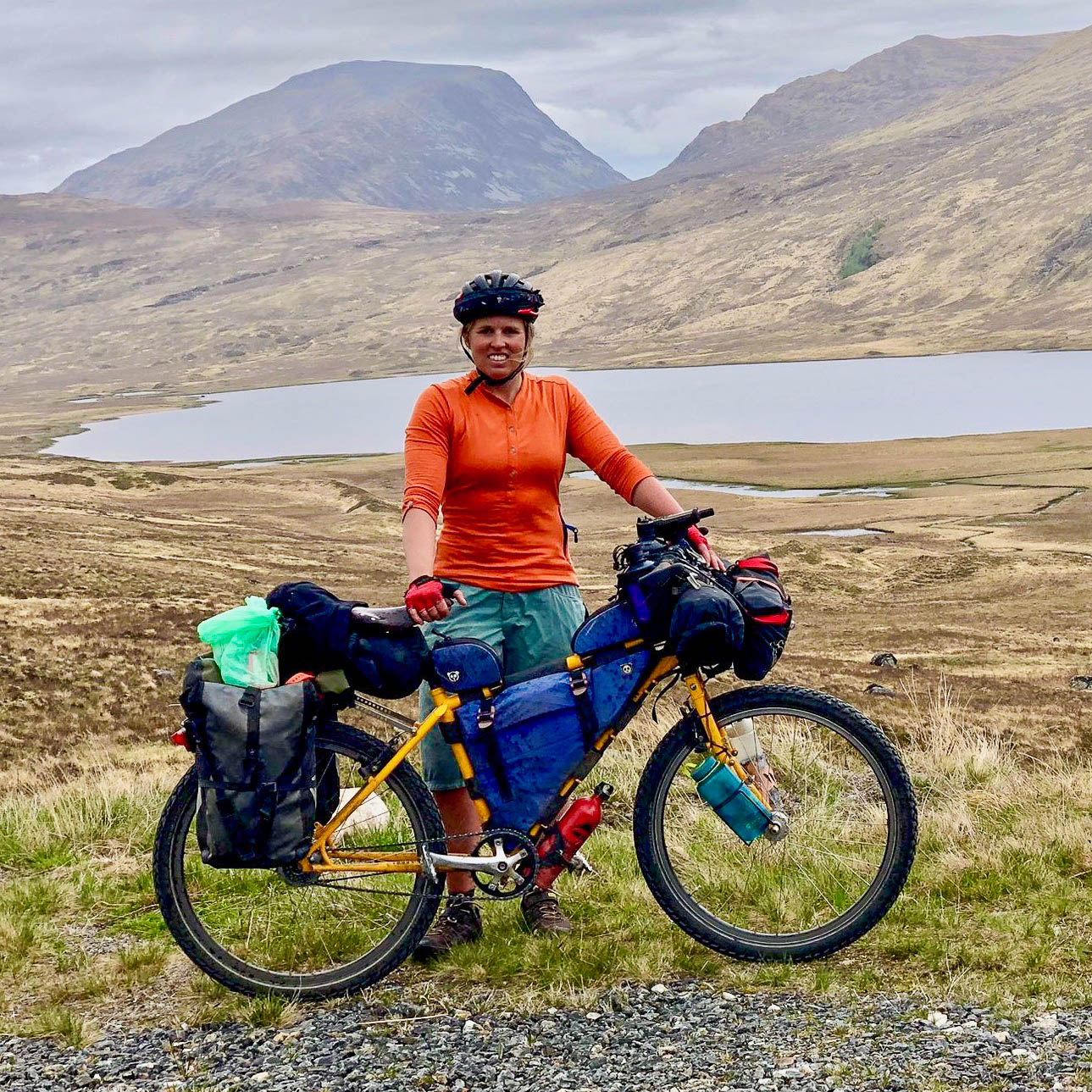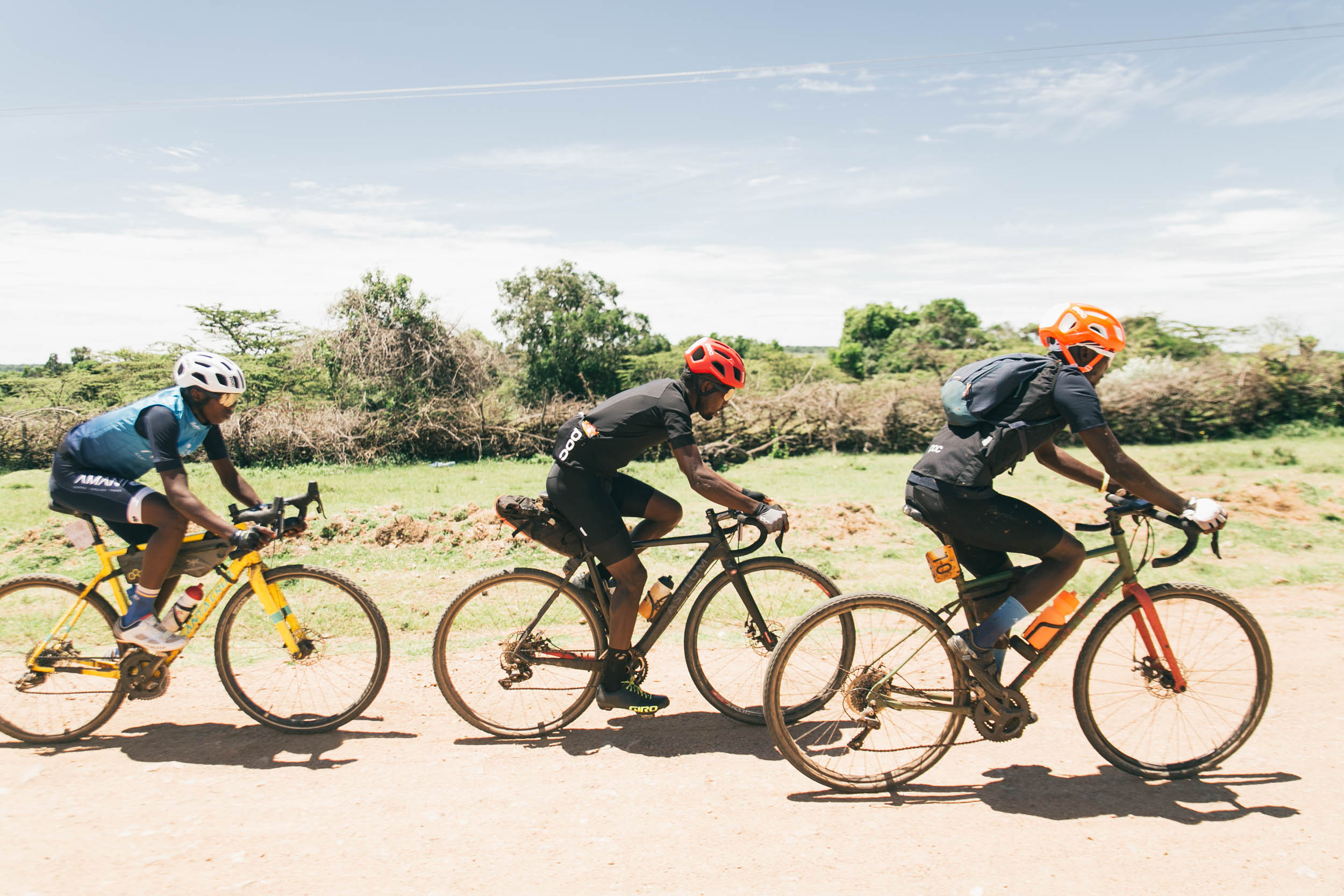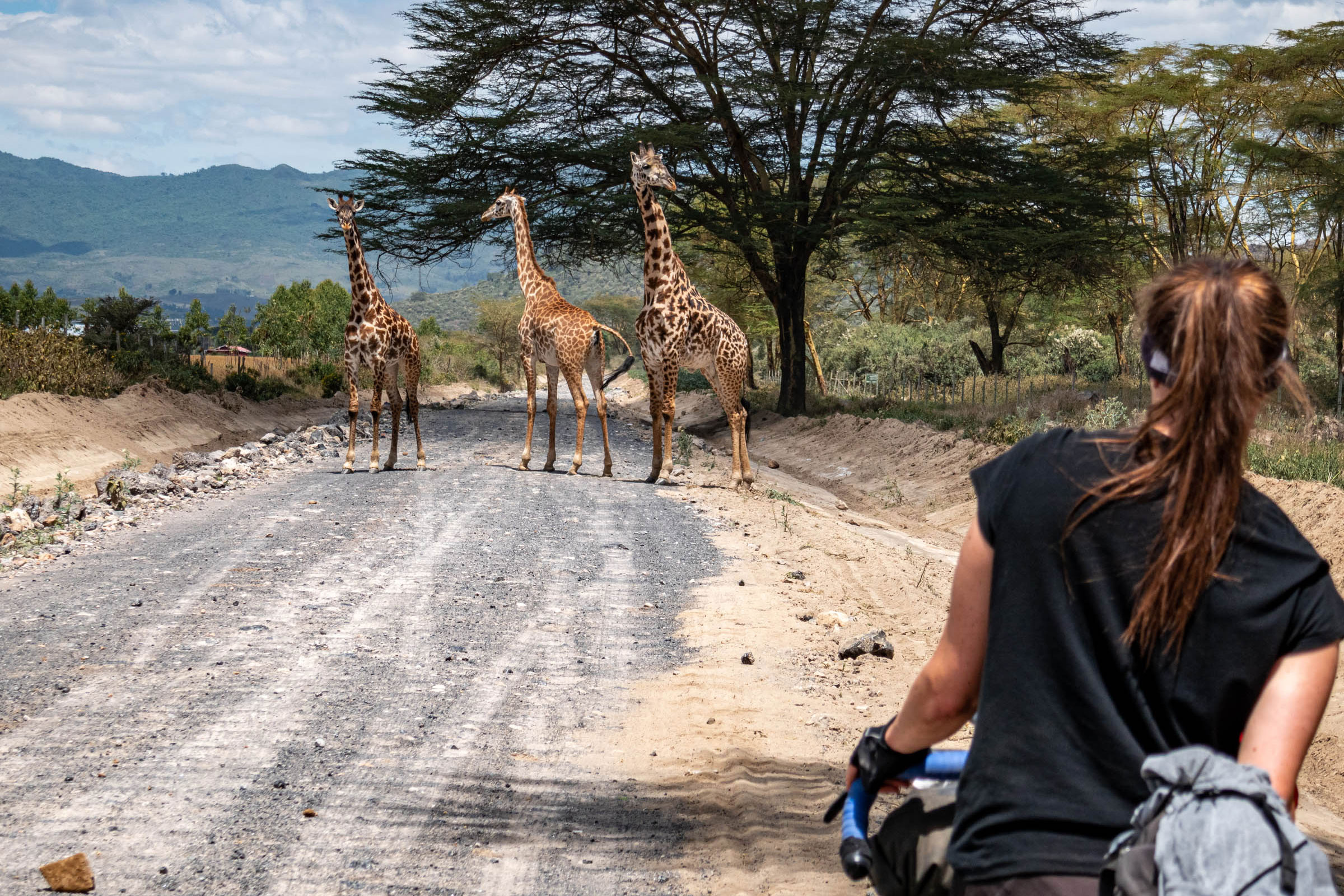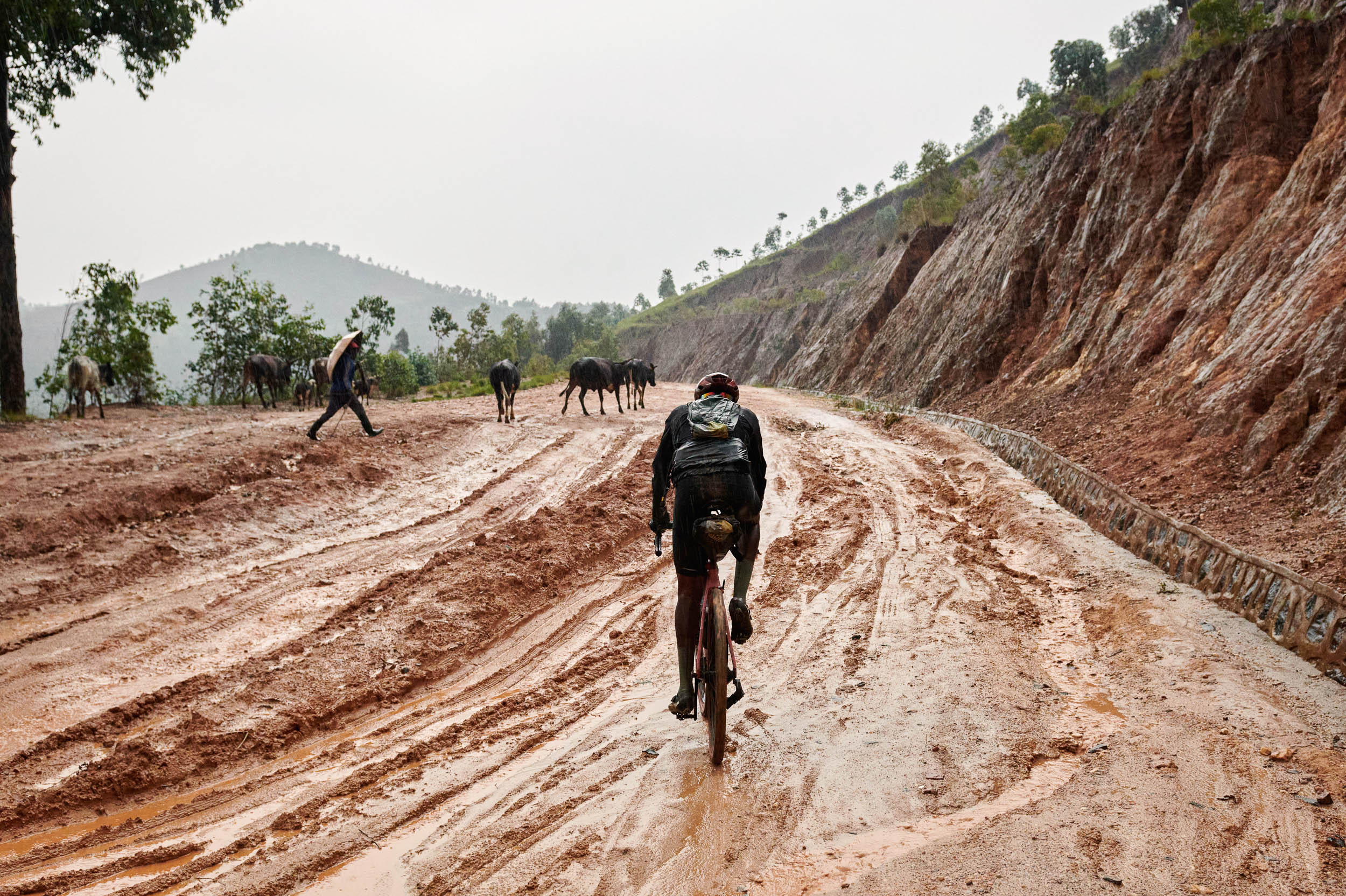Inner Odyssey: 1,000 Kilometers Across Kenya
Share This
Over the summer, Tara Weir completed the 1,000-kilometer Kenya Bike Odyssey, a bikepacking route that starts in Nairobi and takes riders on a tour of the East African country’s diverse landscapes and unique wildlife. In this report, she shares an honest reflection on the joys of experiencing a new country from the saddle and the unfortunate realities that solo women sometimes face while traveling. Read her story here…
Words and photos by Tara Weir
My shoulders are tense from gripping my handlebars tightly as I weave through the dusty, congested side streets. The potholes are like moon craters, and old motorbikes and foot traffic roll in and out of them in a frantic dance. My tires are guided by an imaginary line carving a path through the hustle. Each slow, nervous breath is another 10 revolutions and a way forward. Then, the cacophony is broken by song. Harmonizing voices bellow from a tiny tin-roofed dwelling. From a hand-painted sign outside, I can see it is a church. The glorious sounds burst through the mud walls—they could fill a cathedral. I’m riding my bike through the outskirts of Nairobi, and it’s Sunday morning.
While cycling the 1,000-kilometre Kenya Bike Odyssey, I would eventually come to learn and embrace the Kiswahili phrase polepole (“po-lay, po-lay”), which means “slowly, slowly.” To me, these words represented a way of life—a way to find calm to navigate challenging times. I was worried about the difficulty of the route, especially the heat, the road conditions, and the relentless climbing. Using the polepole mentality helped get me through the toughest, hottest days across the roughest terrain. Start early and keep pedalling, I told myself, even if it takes all day to cover 60 kilometres.
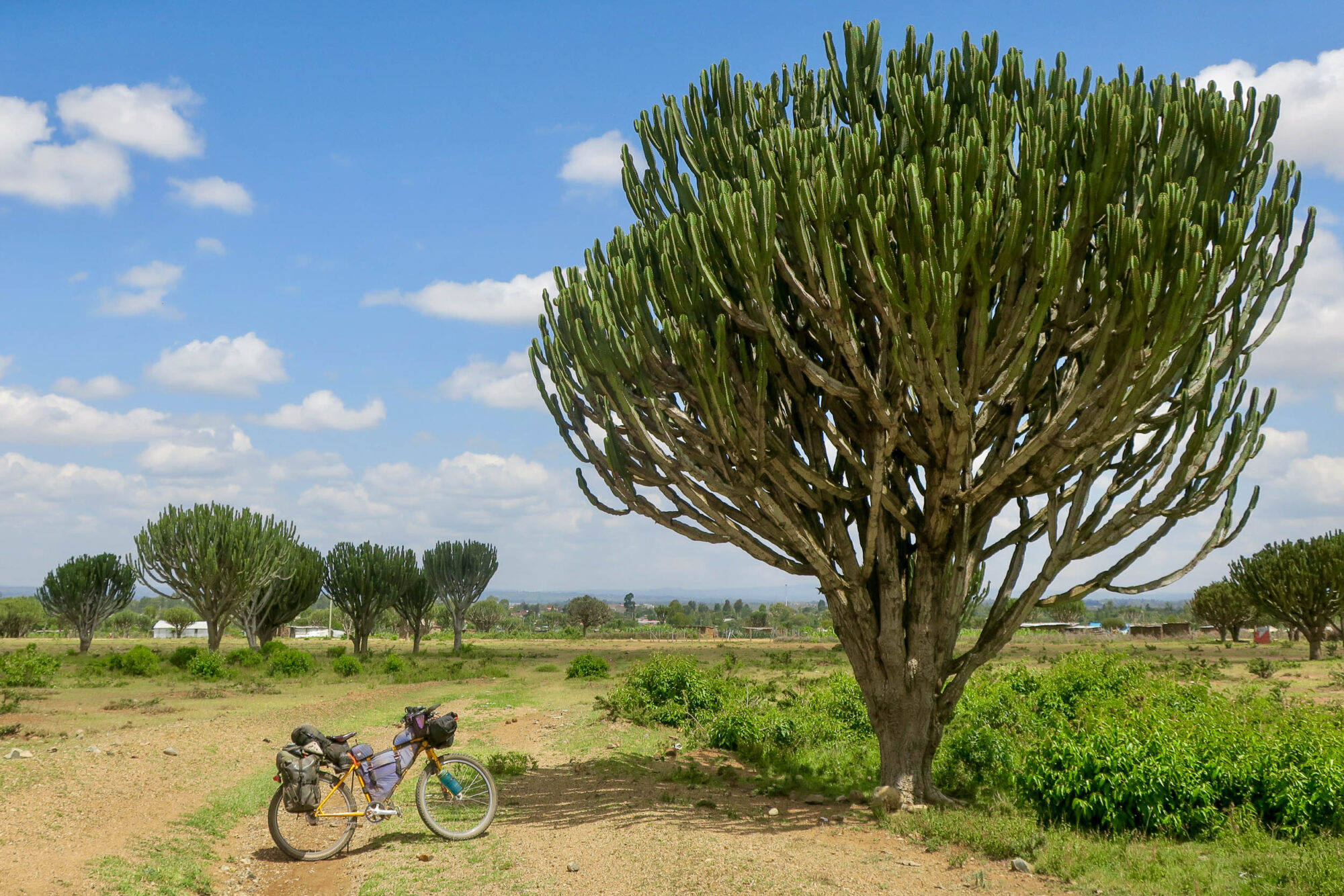
The physical challenge of the route wasn’t my only concern. There were the wild animals too. This is funny coming from a person who works a forestry field job in the heart of black and grizzly bear country in Northern British Columbia, Canada.
“Kenyans don’t really worry about lions,” said Benson, the owner of Bamboo Gardens, where I spent my first night. “The Masai have been sharing the land with lions as long as they have existed. The lions stay away from the Masai. They know that if they take their cows, the Masai will kill them.”
On the Kenya Bike Odyssey, however, there were only lions in Laikipia, apparently, and they often stayed away from people—like most bears do. Lone buffalo and elephants were the most dangerous, as many locals told me. All these thoughts raced through my mind as I got further from the capital, eventually passing through the Limuru tea plantations. Awash in the harsh sun, the hillsides, combined with the shadows from the odd tree, were every brilliant shade of green. A few tiny figures would appear, tracing a faint trail through the vegetation. The red dirt paths were rough and rocky; I already knew that progress would be slow. I was tired, and I had still another 700 metres to climb. I didn’t see any wildlife that day, aside from a few unfamiliar birds.
There are certain life experiences that will stick with you. For me, one of those was seeing a giraffe in the wild for the first time. On the second day, I pedalled through Kedong Ranch, surrounded by acacia trees, with their wiry tops stretching across the plains like stratus clouds. If I had a singular image of Kenya in my mind, that was it. These trees also spat out giant, sewing-needle-sized thorns, and I was happy to have sealant in my tubes. I saw the giraffes’ spotted, crane-like necks in the distance as they chewed on bushes. Creatures from another planet. Next came a group of zebras. They were trotting just ahead of me and then stopped to stare, their tails bobbing goofily in sync. Later, I saw a group of elands, joined by gazelles. I stopped to look, and they would do the same, eventually sprinting away from me when I started riding again. I also spotted a single buffalo in the distance, and I immediately tensed up. The lone buffalo is the unpopular one who unfortunately got kicked out of the herd and tends to be particularly aggressive. The animal stood completely still, watching the strange two-wheeled creature slowly ride by. I bet it was as relieved as I was when we were no longer within sight of each other.
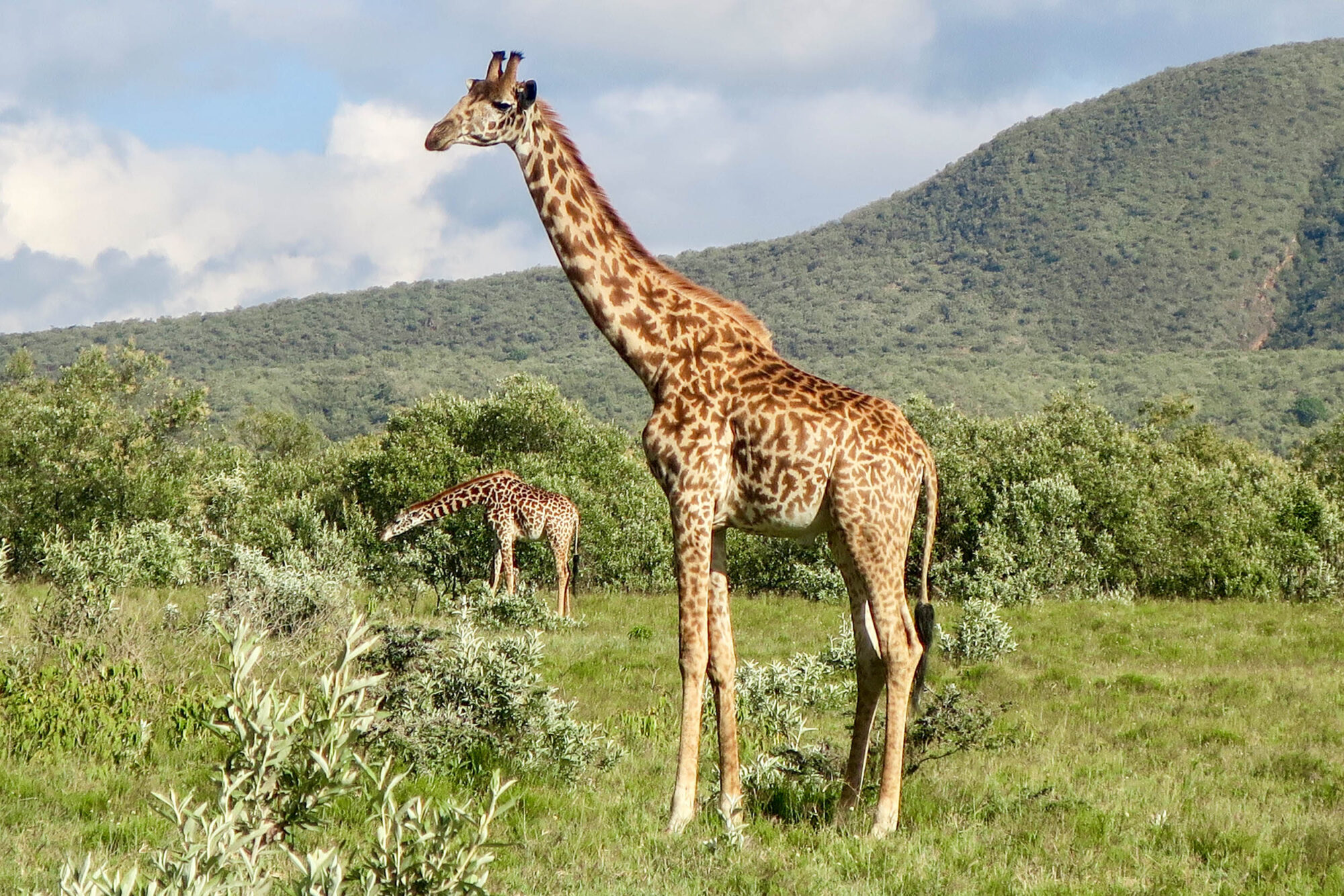
In between these bicycle safaris, I passed through many small villages. As a solo white woman on a bike, I received a lot of attention, but it was almost always friendly. A local explained to me that seeing a solo white woman on a bicycle was quite funny to children because of just how strange and unlikely it was. They would enthusiastically chase the bike, shouting, “Mzungu! Mzungu!” Mzungu is Kiswahili for white person. Sometimes, an entire yard of schoolchildren would stop whatever they were doing and charge to the fence, shouting excitedly at the circus rolling through town.
The adults would greet me with “Jambo!” or “Habari?” meaning “Hello! How are you?” Sometimes, it was in English.
“Welcome, lady!”
“Welcome, my sister! How are you?!””
“Mzuri sana!” Very fine, I would say, in my very limited knowledge of Kiswahili. Interactions with locals were a joy. Kenyans had a wonderfully laid-back nature that brought me a lot of calm. They helped me develop a certain approach to the ride—once again, polepole—one pedal stroke at a time.
Passing through these villages with a raging appetite, I would look for signs that said “hotel.” In Kenya, this was not a place of accommodation but a basic restaurant. These “hotels” ran on their own schedule; the main dish was cooked once per day, and you would get it if you happened to arrive at the right time. This was often ugali, a type of corn meal made from maize or corn flour accompanied by a small anchovy like fish or sometimes stewed goat meat. Most of the time, it was just sickly sweet chai on offer and greasy, Indian-style chapati or mandazi (fried sweet dough). In these tiny places, a small crowd would usually gather, and all eyes were on me. Though the attention was often friendly, it wasn’t always an entirely relaxing experience.
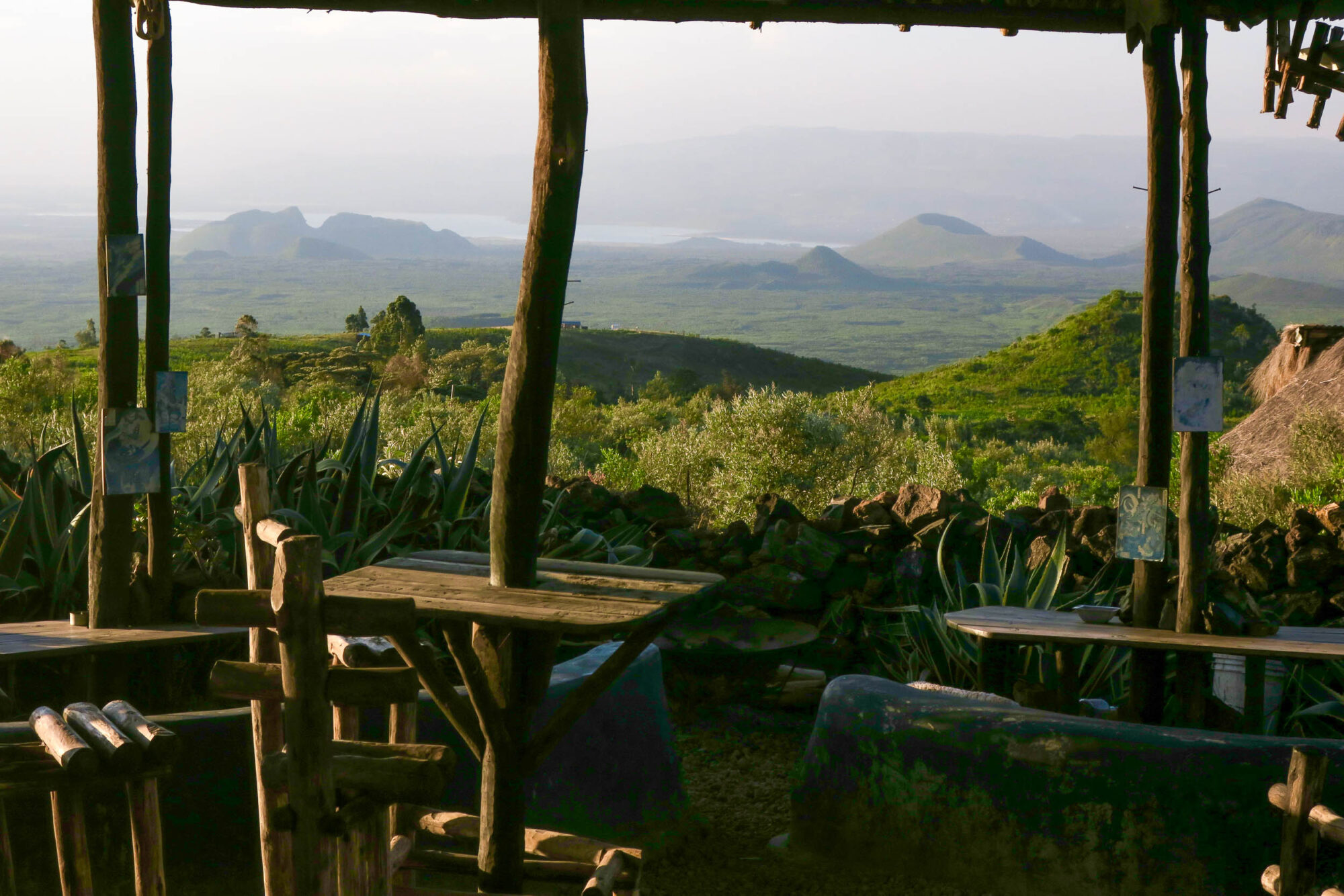
When I arrived at Earth Camp, run by an eccentric Japanese expat named Kaz, it was a welcome oasis with its spectacular location and geothermal saunas. The roads leading there, however, were the opposite—extremely rough and rocky. A 60-kilometre ride was often a taxing, all-day affair on this route. Earth Camp was perched high in the hills, with a few basic huts and a sheltered structure for tents that overlooked a stunning valley. The shadows from passing clouds highlighted two distinctive hill formations protruding from the valley floor. One of them was known as “the sleeping warrior” due to its shape. Kaz also pointed out Lake Elementaita in Soysambu Conservancy in the distance, where I was heading the next day. “See how it looks a bit pink? Those are flamingos,” he said.
I pedalled into day four of the route with tired legs, but one of the major highlights for wildlife supposedly lay ahead. Through Soysambu Conservancy, I cycled with a ranger past Lake Elementaita, where I saw a large herd of zebras, buffalo, and huge groups of flamingos lining the shores. I camped in the conservancy, listening to eerie yelping noises that kept me awake most of the night. Being half-asleep, I convinced myself for a moment that they were hyenas and regretted not building a bigger fire. In the morning, a quick Google search told me that they were, in fact, zebras.
Leaving Soysambu, I was on a major high. I was falling in love with Kenya—the wildlife and the wonderfully laid-back nature of the people. The route left the arid, acacia-covered plains and traversed rough and muddy dirt tracks through forests. I passed only a few people in the span of a day, and I met one man pushing a rusty old bicycle with a giant stack of firewood strapped to the back. It must have been about six feet high or more. The ingenuity in Kenya, given the very basic tools available, impressed me on a daily basis. I often saw tiny motorbikes carrying entire families or massive loads that would barely fit in a pickup truck. To witness this all on a bike was endlessly entertaining. I was in my element, feeling at ease and confident. Unfortunately, this was about to change.
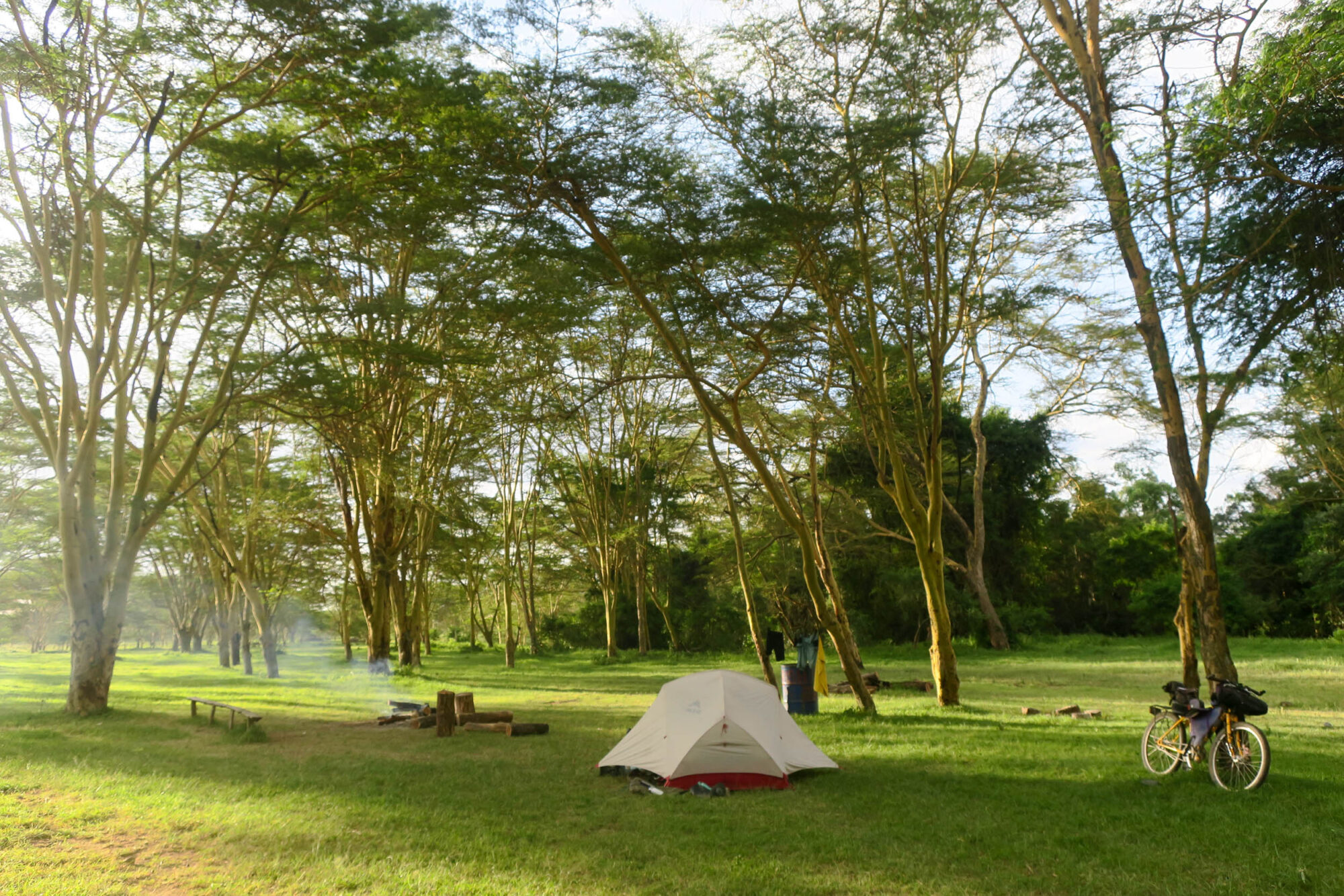
I reached the Equator and took the mandatory photo beside the sign in the town of Mogotio. Already, I wasn’t a huge fan of the place—too hot and too many mosquitoes. I was spending the night in a sweaty banda, a basic hut accommodation with an en suite bucket shower and bed. I had a short riding day and wanted to relax a bit in the room. Later in the afternoon, the very keen and chatty owner knocked on my door and asked if I was awake. Weird, I thought. The conversation then took a bizarre turn as he stood in my doorway and didn’t appear to be leaving. He asked if I was married, a typical, harmless question around here, but the tone this time was different. It wasn’t just curious conversation, it felt predatory. It was followed by, “Do you have kids?”
“No,” I replied.
There was a pause, and then he said, “Stay in Kenya, we can fix that.”
I could feel my blood boiling. Then he asked, “In Canada and the USA, you have sex for pleasure?”
“You’re being inappropriate right now,” I said, firmly. “We’re stopping this conversation.”
He stopped. I felt an intense anger that would linger with me for days. I somehow felt betrayed and naive at the same time. I realized that I was stuck in a sort of fantasy world—thinking that this couldn’t happen here. The inner peace that I had felt the last five days suddenly came to an abrupt end.
It was bad timing that the next day to Tenges happened to be the toughest day of the trip. It rained heavilyy the night before, and the air was so dense that I was almost choking on it as I climbed. The hills were extremely steep, and I was going off of very little sleep. Everything was tense, and I felt easily startled, still upset with what had happened the previous night. Green peaks rippled in and out of the dramatic Kerio Valley, dotted with small settlements. A few excited children shouted the familiar excited “mzungu, mzungu!” chants as they jogged beside me. My head throbbed, and I had no power left, but somehow my wheels kept turning. I spent a good chunk of the last five kilometres heaving the bike up the steep and rocky tracks. I felt like a machine on autopilot, chugging forward without feeling or observation. It would take me days before I could feel at ease again. I missed the calm.

The descent to Lake Baringo a few days later brought me back to life. It ended up being one of my favourite days of the trip. I was particularly concerned about this massive descent as I was told it would be quite rough, and my 2.2” tires and V-brakes might not be up to the job. Another night of heavy rain (and a flooded tent!) led to some very sticky mud at the start mixed with large rocks. It was more of a walk than a ride, and my hands got a workout squeezing my brakes.
Eventually, the route turned off onto some remote, sandy tracks through a scorching valley of acacias and their menacing thorns. The riding was wonderful and felt remote. I went a few hours without seeing anyone. I passed through some tiny villages and stopped at a little shop for a Fanta. Inside the stifling enclosure were some frilly girls’ dresses hung from nails along with strips of plastic sachets of shampoo, sweets, and a few soft drinks. The lady inside grabbed me a slightly cold one out of a small pit dug into the ground covered with a chunk of wood. We sat on plastic crates while I guzzled it back. She smiled the whole time. It was a grin that I could feel from head to toe. The tension left my body once again.
Not long after leaving the village, I saw more Seussian creatures—a group of six ostriches. Some locals came up behind me on motorbikes and encouraged me to get a bit closer. These flightless birds looked like they could be Jurassic Park escapees. The wildlife and landscapes of Kenya were ever-varied and continued to astound me. On the route, I saw giraffes, zebras, elands, impalas, elephants, warthogs, buffalo, monkeys, crocodiles, and many types of birds. Some of the landscapes included great lakes, towering green mountains, forests, deserts, and grasslands. I was now approaching Laikipia province, and I was told to be on the lookout for elephants.
You don’t want to surprise an elephant it said in the route guide. With the sheer size of the animal, I wondered how that was even possible. The landscapes of Laikipia felt boundless compared to other sections of the route. I was surrounded by expanses of rolling hills coloured in a varied palette of oranges and reds, with the familiar acacia trees and small huts scattered across them. This was Masai land, and I passed some locals in traditional dress. I spent the next few nights in the company of armed rangers at primitive bush camps. This was necessary as elephants, lions, and hyenas were known to roam the area.

For the last night camping on the route, I pedalled up to the viewpoint that promised to be one of the best of the trip at Mukugodo Nikijabe Forest Campsite. This was a real bush camp, merely a place to pitch a tent surrounded by forest. I had arranged for two rangers to meet me there. They both arrived on a tiny motorbike with a 20L jug of water. They immediately began to build a fire for the night watch. One of the men asked if I wanted to walk out to the viewpoint.
“One of us will stay here to protect your things from the baboons,” he said. They had already gathered nearby and were eyeing my tent setup.
The view oddly reminded me of a high point I had climbed to in the Australian Outback. Dry, snaking river beds pushing their way into folds upon folds of reddish, dry plain dotted with green. “This is all Mukugodo Forest,” said the ranger.
Later that night, I joined the watchmen by the fire. The forest was now blanketed in darkness, aside from a single burning flame in the distance.
“You see that light? Someone is living out there. They want to be here. To protect this place,” one of the rangers said. He explained that the conservation area received no money from the government, relying mainly on tourism for support. He said the rangers did their job for free for the last five years, protecting others from wild animals, all by choice. The price is now or 1000KES per ranger, or about $7 USD.
“It is a difficult job, but we must do it. I want my children and their children to experience this place as we have. It is our duty and honour to protect it,” the man told me.
As I fell into a deep sleep in my tent, the men took turns staying awake the entire night. They stoke the fire and then retreat to the edge of the bushes.
“We are like soldiers. We know that we must hide under cover.”
Apart from the crackling of flames, the night is eerily silent.
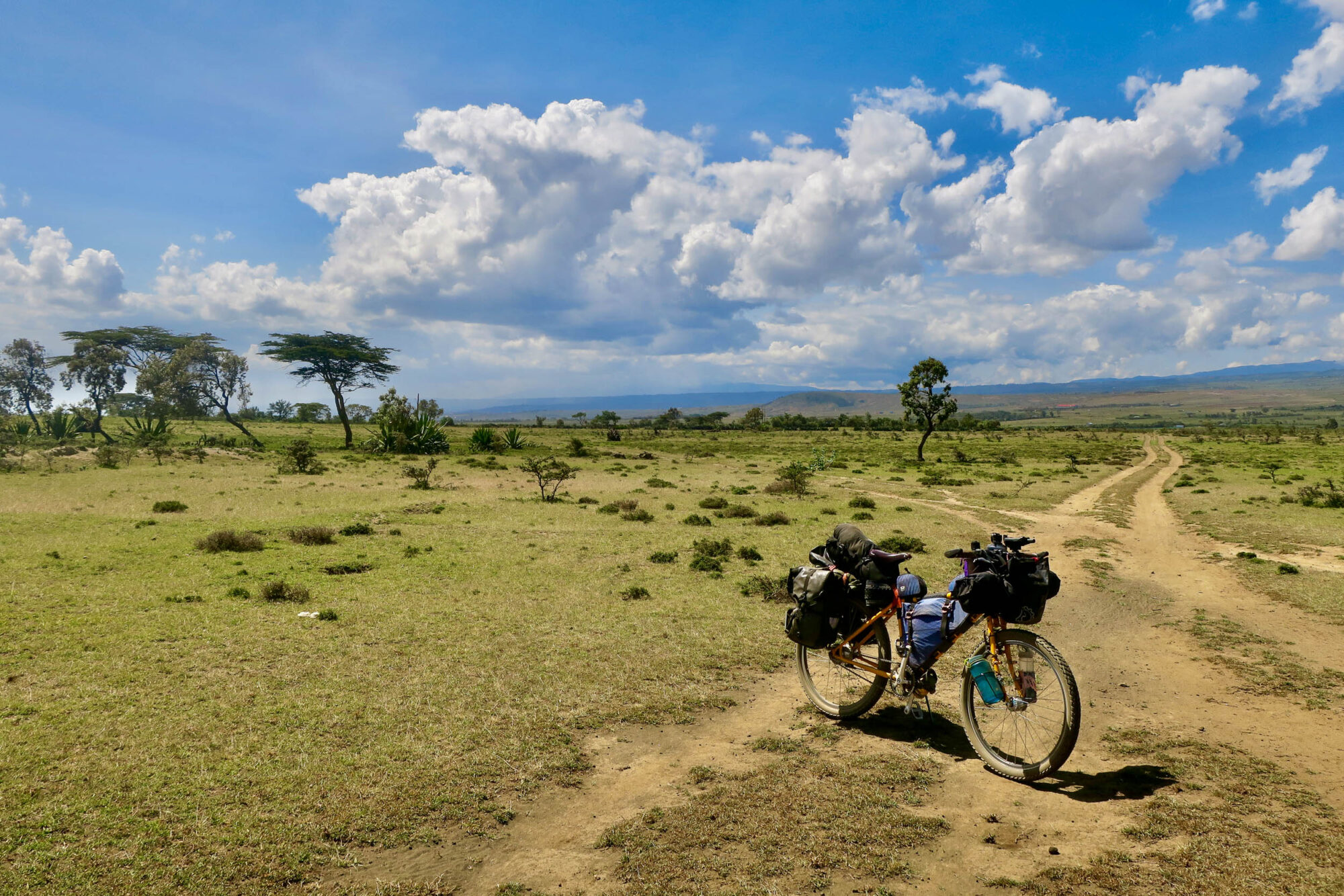
The next morning, I got up for my last sunrise on the Kenya Bike Odyssey. I gazed off into the distance as the rising sun highlighted the contours of the forest. I thought about all that I had accomplished and overcome on this route. I came into the country with serious doubts and fears that my body wouldn’t hold up to the rigours of the trip. For this, I adopted the mentality that I used to complete a 52-mile ultramarathon a few months before—something that previously seemed impossible. I figured all I needed was time. Go slow, polepole, for a very long time, and you will get there eventually. Across rough tracks in hot weather, pushing and sometimes carrying the bike, I made it. But the physical challenge was only a small part of a journey that I would consider to be transformative.
My view of the country was a complicated one. I started off on a very big high, in love with the people, only to be drawn into a very dark place shortly after. I appreciated the sense of community and admired the way people managed to make their lives using only the necessities. In North America, we simply have too much stuff, and we purchase large spaces to isolate ourselves from others. This is, of course, a complex topic of discussion, and I acknowledge that I am merely a tourist and observer, having no right to pass such judgements in a foreign country. I did not miss the overarching capitalist way of life there, but at the same time, I was fiercely protective of my freedom as a Canadian woman. I wanted to be seen as more than just a potential mother or wife. The encounter in Mogotio, unfortunately, brought out great anger in me, but it was an important reality check, and it’s something that could happen in any country. It also wasn’t the first time I have encountered such behaviour as a solo female on a bicycle.
After Kenya, I felt like I became a new person learning to co-exist in two worlds. The journey by bicycle delivered another piece of the seemingly never-ending puzzle of what it means to be human. I felt freed by a foreign way of life but also trapped at the same time.
The rangers were still sitting by the fire, chatting, as the weight of the darkness began to slip away. I strapped the last bits of load to my bike and eventually joined them. As a new day dawned, we sat, watching the flames die out, slowly. Slowly.
Further Reading
Make sure to dig into these related articles for more info...
Please keep the conversation civil, constructive, and inclusive, or your comment will be removed.






